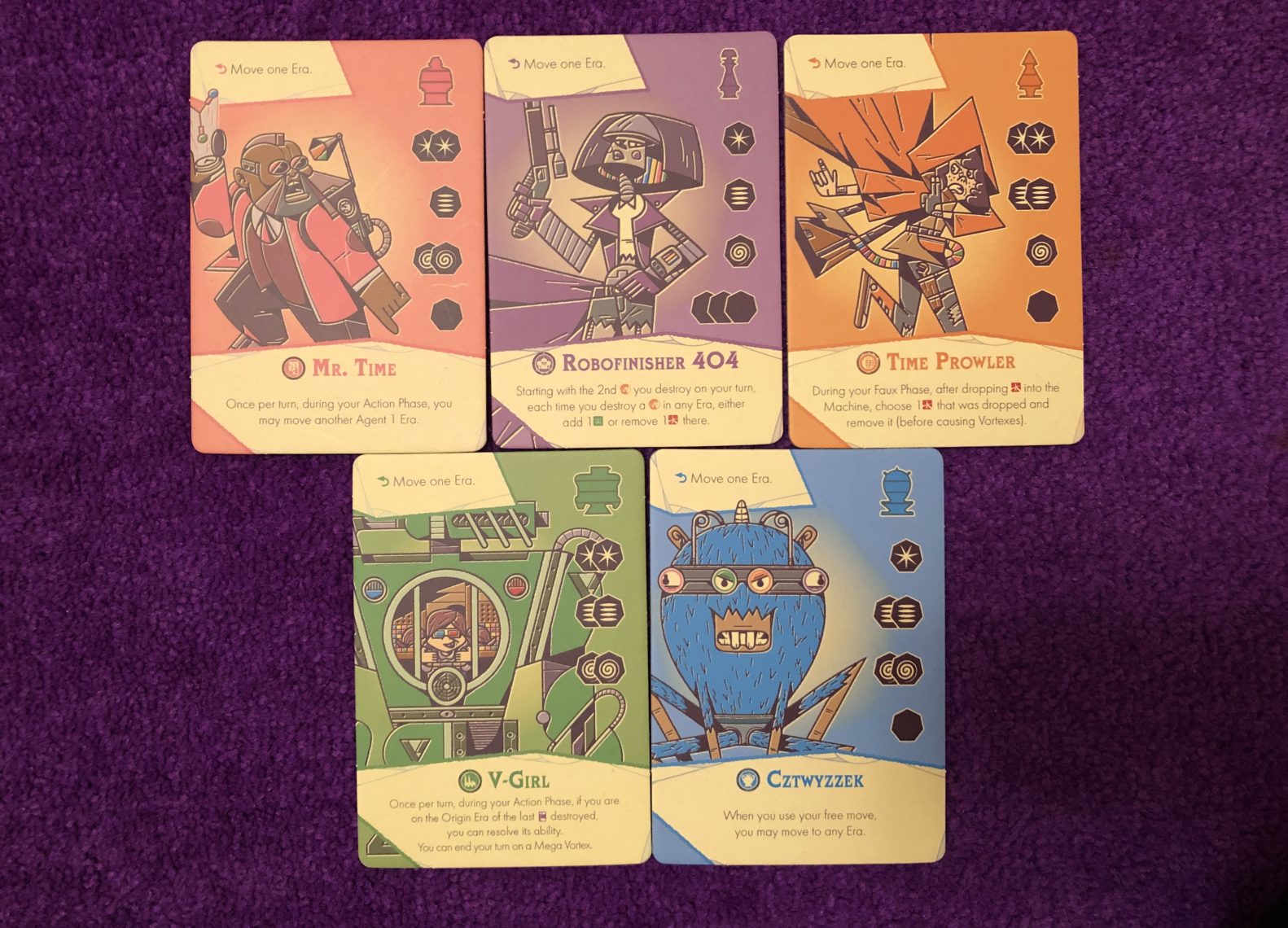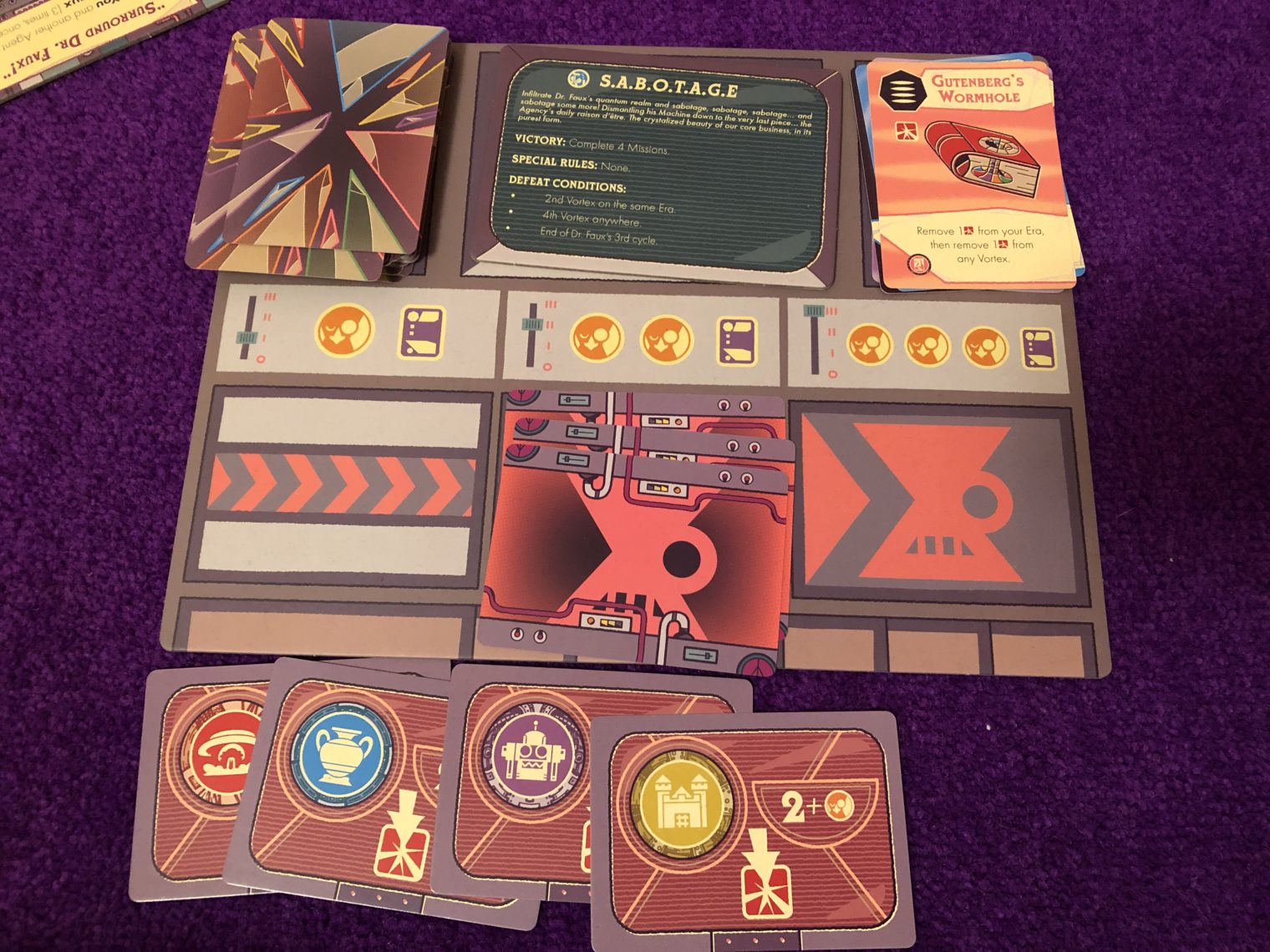Pandasaurus Games is The Little Company That Can—and does—fill the niche once dominated by Rio Grande and Mayfair Games: it seeks out, fosters, licenses, and distributes fresh and innovative games by both well-known and up-and-coming designers and showcases them with colourful, high-quality components. Think Dinosaur Island, Silver & Gold, Nyctophobia, Passtally, and Sonora.
Plus, they’re not only willing to take chances on unusual formats and themes; they’ve also reissued well-loved cult hits like Tammany Hall, Fire & Axe, Qwinto, and The Great Fire of London.
It’s a catalog of enviable breadth and depth, but until now what it’s been missing is a BIG co-op game. Oh sure, they’re the North American distributors of The Game and The Mind, two of the most popular card-driven co-op games of the past five years. But I’m talking about a Pandemic, a Horrified, a Mansions of Madness, a Marvel United: something with a relatively shallow learning curve, drenched with theme, great table presence, plenty of replayability, and lots of potential for expansion content.
Which brings us to The LOOP, designed by French designers Maxie Rambourg (Big Book of Madness) and Théo Rivière (Draftosaurus, Nagaraja). To me, The LOOP is a Pandasaurus power play for that juicy co-op games audience, and while it has many fine qualities to recommend it, I don’t think it’s going to elbow aside any of the established giants of the genre.

In The Loop, up to four players take the roles of agents trying to defeat evil time-traveller Dr. Faux by completing four missions (plus other conditions depending on what mode you’re playing) before Dr. Faux creates too many Vortexes or you run out of time.
There are five agents to choose from, each with their own unique power, backstory, chunky mega-meeple, and starting deck of Artifact cards that give each character their own strengths that you’ll be able to expand and build combos on by scavenging more Artifacts as the game progresses.
The board is a seven-sided beast divided into (unsurprisingly) seven sectors representing successive eras of human history and future, looping around from the far future back to the distant past. Each era also gets a random Mission, In the middle of the board sits Dr Faux’s Machine, a genius little cube-tower which you will use to randomly assign Dr F’s Rift Cubes to different eras when it’s his turn to be his bad self. This tower Actually Works; I say this because I can’t tell you how many times I’ve been disappointed by games with fancy-shmancy “randomizers” that really don’t (ie, Amerigo).
You’ll set the initial game state by seeding the board Pandemic-style with initial disease Rift cubes and Clones (minions who make your life miserable but who can be manipulated and/or destroyed for your benefit), and Energy cubes (which you’ll expend to take most of your Actions). The gameflow follows the co-op template of each player Doing Bad Things and then performing Actions to Do Good Things to try to not only counteract the Bad Things but also win the game.
Doing Bad Things involves adding more Clones to the board and then randomly picking a sector to be Dr Faux’s base for the turn; that sector and the two adjoining ones receive a spray of Rift cubes–the exact distribution of which is random thanks to the Machine. The moment a sector receives its 3rd Rift cube it implodes into a Vortex, cancelling its mission (a new one propagates elsewhere). Vortices are Bad–because four of them ends the game with a loss–but they’re also kinda Good–because some Artifacts can use them to their benefit.

Agent Actions include: moving from Era to adjacent Era by expending Energy cubes; using and exhausting an Artifact from your hand for its considerable benefit; or doing a LOOP, which is really just expending an Era’s Energy to refresh some subset of your played Artifacts–which extends your turn and which can be done over and over again subject to the availability of ready Energy.
If you end your Actions in an Era with an available Artifact you can scoop it up and add it to the top of your draw pile. More will spawn randomly on the next player’s turn. A skillful assemblage of Artifacts can result in some truly OP combos–which you WILL need to defeat the game as the difficulty ramps up over its three Cycles.
I’ve just summarized The Loop’s introductory “S.A.B.O.T.A.G.E.” mode, which itself has three levels of difficulty. There are three-count’em-THREE other modes available, each adding or changing bits and bobs to the game: Supa Clones (which must all be destroyed to win as well as completing missions–but destroying them gives you an infinitely-reusable Energy cube in that era); L.A.S.E.R. Centrifuges (must all be destroyed and take 3 damage to do so, but destroying them advances all missions); and Ultramachina, which introduces a Dr. Faux AI deck making him much more difficult to foil.
In other words, mucho variety and replayability.
The Loop receives Pandasaurus’ usual excellent buff-and-shine in terms of rules-writing and components. There is plenty of flava-text throughout which reaches an almost Chvaatil-level quality of humour, and there are a couple of Easter eggs which will reward close examination of all the components. Gameplay is challenging and fun, and the solo mode included is exceptional in its simplicity and elegance: you pick any two Agents to play and shuffle their starting decks together. On your turn you start dealing cards from your deck, assigning them to your Agents; the Agent you will play that turn depends on which Agent gets three cards first–which provides for plenty of unpredictability as well as strategy.
So with all this going for it, why did I imply near the beginning of this article that The Loop is unlikely to dethrone any of the established co-op heavy hitters?
One reason is that for all its bells and whistles and soundness of play, The Loop doesn’t really stake out any new territory gameplay-wise. As I’ve mentioned a couple of times, it follows all the usual co-op game tropes, and even though some of the mechanics are given a fresh coat of paint, there’s nothing here to prevent a “Pandemic Effect” of one player dominating the game. (On the other hand, the solo experience is exceptional at all levels.)

The other reason has to do with its theme. Gamers are definitely willing to embrace games with homegrown, non-IP themes (viz Gloomhaven, Pandemic) so that’s not the issue. Rather, for a game that is supposedly about time travel, there is not a single mechanic in The Loop that actually plays with the potential paradoxes and powers that a game about time travel should have. The seven Eras in the game could easily have been seven countries, seven companies, or seven dwarves for all it matters to gameplay. Pandasaurus has an upcoming release that definitely does take full advantage of the time-travel theme (which I’m not at liberty to disclose right now but you can bet I will when I can). Ultimately, despite the quality of its gameplay and its campy s.f. flava and backstory, The Loop is ultimately…empty–when it comes to using its theme.
Overall I would definitely recommend The Loop either for solo gamers looking for a really good puzzle experience or gaming groups who want to dip their toes into co-op games and want good gameplay for their money but don’t find any of the established themes attractive.
Thanks to Pandasaurus Games for providing a copy of The Loop for this review. You can still pre-order The Loop on Pandasaurus’ website until this Friday.
[…] paper can be reused, you know!), I found a colourful package with a quirky face on the box. It was The LOOP, published by Pandasaurus […]